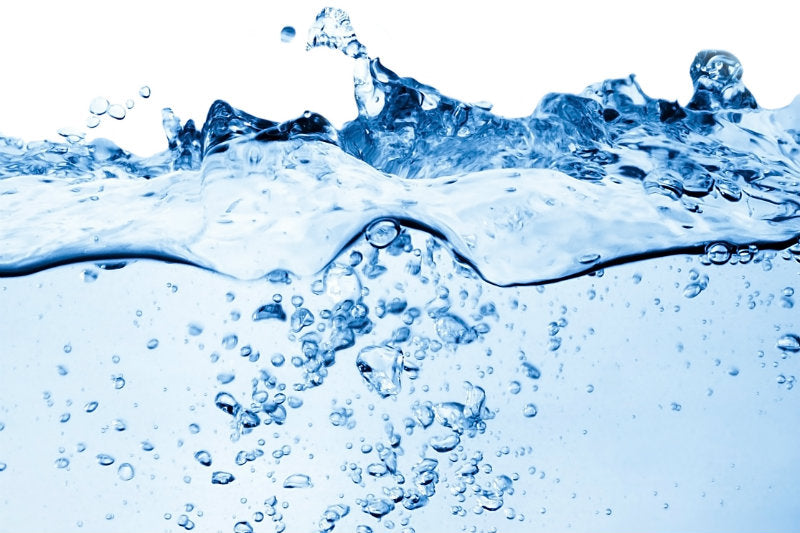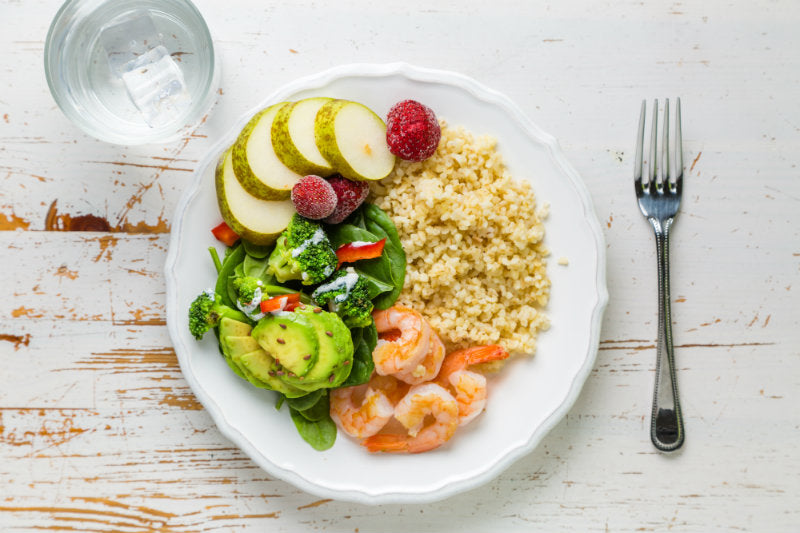Staying hydrated is a crucial component to athletic performance and general wellbeing yet is frequently overlooked. It seems obvious to drink water, but are you drinking enough, and could you be using other tools at your disposal, like electrolytes?
Water (or H2O) is the most abundant molecule in the body contributing to upward of 60% of total body mass. Its significant involvement in all bodily reactions means that it must be able to travel to and from the following compartments:
1. Intracellular compartment - the space within the cells themselves and the largest occupant, holding about 60% of the body's total volume of water (e.g. muscle cells or myocytes).
2. Extracellular compartment - accounts for another 30% of the total volume of water and denotes the fluid surrounding the cells.
3. Intravascular compartment - inside the veins and arteries; the volume of water is approximately 10% of the total.
The renal system, controlled by the kidneys, is the primary regulator of fluid balance in the body, ensuring consistency in the volume of water distributed between these compartments. Other organs, such as the brain, lungs and liver assist the kidneys in knowing when to filter water out through the urine if there is excess, and when to 'hold on to it' if there is not enough.
When water balance is out of whack, other positively and negatively charged molecules known as 'electrolytes' (sodium, potassium, calcium, magnesium and chloride) are affected, having a knock-on effect to a whole host of critical bodily processes, such as:
o Transporting matter in and out of the cells
o Regulating blood volume
o Metabolic reactions
o Joint lubrication and organ protection
o Controlling core body temperature, which sits tightly at 37.7°C
The minimum daily water intake is 2.6L (10 glasses) for men and 2.1L (8 glasses) for women (1). Although, there can be substantial variance in the requirements for athletes to maintain fluid balance as heat stress and strenuous exercise can significantly increase daily water needs (2).
The main issues surrounding hydration and exercise

Our hydration needs are determined by the amount of water and electrolyte intake versus loss, which can vary according to the person, conditions and activities.
In hot, humid conditions or extended bouts of high-intensity exercise, water and some electrolytes are lost (2) through sweat (and additional water through breathing), leading to a flow-on effect to the list of processes mentioned above. If we do not cool down and hydrate effectively, not only does our perceived effort increase, but blood flow is redirected. In these conditions, blood is shunted from the muscles and gastrointestinal tract (GIT) toward the periphery so that heat can be transferred away from the body. While this helps to cool us down, unfortunately, it compromises muscular exertion and VO2 max (aerobic endurance), and GIT discomfort occurs – all of which are far from ideal for anyone wanting to perform in their sport.
In addition, heat stress increases muscle glycogen utilisation (i.e. energy from stored carbohydrates) (3) further emphasising the importance of keeping cool. Once this energy depletes, the body switches to independent oxygen metabolism (anaerobic metabolism), leading to elevated lactate, which is responsible for that burning feeling in working muscles. Thankfully, these flow-on effects can be avoided through keeping cool and hydrating well before, during and after exercise. The way you do this differs depending on the climate and the frequency, intensity and duration of the sport. You can learn more about the role of water in the body here.
Are you hydrated?
Apart from the feeling of thirst, easy ways to track hydration status is through urine colour and frequency of passing. As a general rule of thumb, urine should be a light straw colour, and you should be emptying 5-8 times per day. If you are after a more thorough assessment, an Accredited Practising Dietitian can assist in completing more complex markers of hydration such as sweat rate through sweat testing.
True Electrolyte
True Electrolyte is a science-backed electrolyte formula comprised of premium electrolytes for rapid hydration and is a part of our endurance range. True Electrolyte is a hypotonic solution, meaning it has a lower concentration of dissolved particles than the body, which allows it to be efficiently absorbed through the gut walls via osmosis. This allows for faster hydration than isotonic or hypertonic solutions on the market.
Knowing that sweetness fatigue is a common issue with many athletes in endurance sports, True Electrolyte has been formulated with Palatinose™, an ingredient 50% less sweet than traditional sucrose. Ideal for consumption before, during or after any strenuous exercise, True Electrolyte is an ideal choice for effective hydration.
Do we need sports drinks?

First of all, sports drinks are not the be-all and end-all of hydration, yet they can form a key part of an effective supplement regime. If an individual is a 'salty sweater'; has a high sweat rate; exercises in sweltering conditions; exercises over extended periods (over 60 mins), or a combination of both, then they will come in handy. Sports drinks typically contain a mixture of water, fast-acting carbohydrates or sugar, and the following electrolytes:
o Sodium (Na+) - The primary electrolyte in focus as it is involved in water retention, muscle excitability, and the permeability of the cells within your body. (4) The addition of sodium in sports drinks not only allows the body to hold on to water, hence keeping us hydrated, but also drives the thirst mechanism while replacing the sodium lost through sweat. (5) Drinking too much water is a common issue among endurance athletes in hot conditions, which results in 'drowning out' sodium. Sports Dietitians Australia (2019) explains that this condition is known as hyponatraemia, referring to diluted sodium in the bloodstream from over-hydrating, causing headaches, disorientation and, in severe cases, coma or death. This is just one example of what can happen when an electrolyte imbalance occurs.
o Potassium (K+) - Works in tandem with sodium to create a pump that allows all sorts of essential packages to be shipped in and out of the cell. Potassium’s role in sports drinks is to assist with muscle contraction and to keep electrolyte balance in check, which we have learned is vital in a range of bodily processes. If potassium concentrations are too low from increased excretion (mainly through sweat and urine) or inadequate intake, this is known as hypokalaemia. Signs and symptoms of hypokalaemia include weakness, fatigue and muscle twitching. Hyperkalaemia also occurs when potassium concentrations are too high, resulting in an irregular heartbeat, muscle cramps, weakness, and a rapid breakdown of muscle tissue (i.e. rhabdomyolysis). (6)
o Magnesium (Mg2+) - Magnesium plays a vital role in ATP metabolism (where you get your energy from), muscular relaxation, and neurological functioning (6). Word on the street is that it also prevents muscle cramping - false! There is no evidence to suggest any strong relationship between magnesium and cramping, and it is more than likely a marketing ploy to sell products you probably don't need.
o Calcium (Ca2+) - Rumour also has it that calcium makes your bones stronger – true! It's also involved in muscle contraction, blood clotting, hormone secretion and transmission of nerve impulses, all of which are particularly important for active individuals.
Luckily for us, our body is a well-oiled machine that can regulate the concentration of all the above electrolytes for a healthy individual under relatively normal conditions. However, outside of these normal conditions we put our body under more stress than it can handle: our body temperature goes up, we use our stored carbohydrates quicker and lose water and electrolytes primarily through sweat. This can occur in triathlons, marathons, long tennis matches, AFL or golf, to name a few sports - and let's not forget fluids lost during physical labour or even when drinking alcohol.
On the other hand, sprinters, gym-goers, weekend warriors (think shorter duration and/or low-intensity activity), children and adolescents do not require these products and should stick with water to remain hydrated. Sports Dietitians Australia (2019) explains that those consuming sports drinks should be aware of the potential for tooth decay and gastric upset. Though this is commonly the case with many competing brands, True Electrolyte removes this concern utilising ingredients that do not ferment in the mouth and are gentle on the stomach.
A study published by the American Journal of Clinical Nutrition (2015) found that drinking milk post-exercise rehydrates the body more sufficiently than water while also providing electrolytes, protein and carbohydrates for recovery (7). Nonetheless, water is still the preferred source of fluid, especially during exercise due to its light content, palatability and effectiveness.
Conclusion
The role of water extends far beyond keeping your thirst quenched. Making sure you're adequately hydrated before, during and after exercise is a necessity that, when overlooked, can lead to many unwanted effects. It should be a priority to stay hydrated based on the appropriateness of water, sports drinks or other fluids.
References
- https://www.betterhealth.vic.gov.au/health/healthyliving/water-a-vital-nutrient#lp-h-2
- Michael N. Sawka, Samuel N. Cheuvront, Robert Carter. Human Water Needs, Nutrition Reviews, Volume 63, Issue suppl_1, June 2005, Pages S30–S39, https://doi.org/10.1111/j.1753-4887.2005.tb00152.x
- Roy L. P. G. Jentjens, Anton J. M. Wagenmakers, and Asker E. Jeukendrup. Heat stress increases muscle glycogen use but reduces the oxidation of ingested carbohydrates during exercise, the American Physiological Society, Volume 92, Issue 4, December 2001, Pages 1562—157, https://www.physiology.org/doi/full/10.1152/japplphysiol.00482.2001?url_ver=Z39.88-2003&rfr_id=ori:rid:crossref.org&rfr_dat=cr_pub%3dpubmed
- Orrù, S., Imperlini, E., Nigro, E., Alfieri, A., Cevenini, A., Polito, R., … Mancini, A. Role of Functional Beverages on Sports Performance and Recovery. Nutrients, Volume 10, Issue 10, October 2018, Page 1470, https://www.ncbi.nlm.nih.gov/pmc/articles/PMC6213308/
- https://www.sportsdietitians.com.au/factsheets/fuelling-recovery/sports-drinks/
- Shrimanker I, Bhattarai S. Electrolytes. StatPearls Publishing, January 2019, https://www.ncbi.nlm.nih.gov/books/NBK541123/#_NBK541123_pubdet_
- Ronald J Maughan, Phillip Watson, Philip AA Cordery, Neil P Walsh, Samuel J Oliver, Alberto Dolci, Nidia Rodriguez-Sanchez, Stuart DR Galloway, A randomized trial to assess the potential of different beverages to affect hydration status: development of a beverage hydration index, The American Journal of Clinical Nutrition, Volume 103, Issue 3, March 2016, Pages 717–723, https://doi.org/10.3945/ajcn.115.114769





